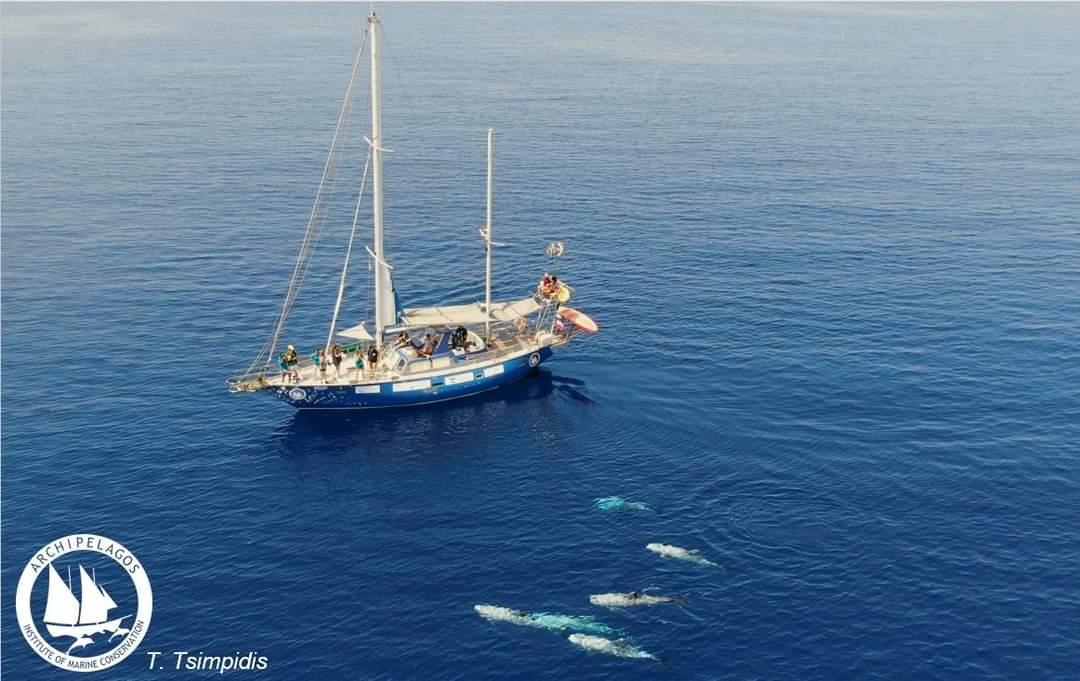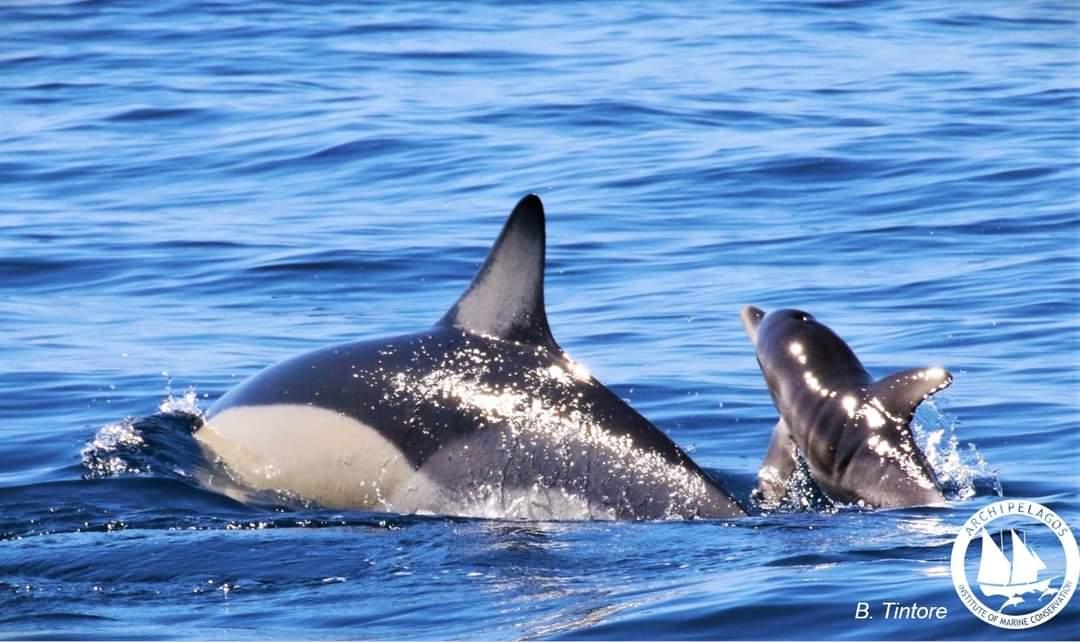
Everyone was amazed amazing images captured by the lens of the Up Stories teamusing a drone, with the “protagonists” video of dozens of adult dolphins with their cubs swimming near the area of Theologos Fthiotida.
Indeed, how common is the above spectacle in Greece and what dangers threaten dolphins in our country?
“What you see in this video is a pod of about 30 bottlenose dolphins. For us cetaceans, that’s a normal herd size,” he begins to explain to K. Anastasia Miliu, director of research at the Archipelago Marine Protection Institute and adds: “This species had many juveniles and that is a relatively large herd for this species. But we also saw flocks of over 200 dolphins.. We often see this in bottlenose dolphins.”
With three vessels and a research team dedicated entirely to the subject, the institute collects data throughout the year on the behavior of dolphins in the Greek seas, the migrations of their populations, and the factors that threaten them.
As Ms. Miliou tells us, “We often meet large groups. We are very fortunate that significant populations of dolphins still survive in the Greek seas.“.
However, she emphasizes that we should not relax and hurries to explain: “We have good populations, but for example, the white-haired dolphin, which is recorded both in the northern and in the southern and eastern Aegean, has already disappeared from the Ionian Sea. Now this dolphin is just… not a common sight, and the Mediterranean population of this species has declined alarmingly.”
These especially charismatic animals form complex social groups and subgroups depending on their characteristics. “Subgroups are separated either for a time or for a longer period. We see groups of adults swimming and fishing fast. We also see mixed groups of juvenile and adult dolphins that act as “educators” for the smaller dolphins.. In any case, their mobility is determined by where their food is and where the dangers are.”
According to Ms Miliou, the most numerous of the four species of dolphins found in Greece are bottlenose dolphins… “which we encounter in large flocks on the high seas. At the same time, unfortunately, this is also the type that we most often encounter with boils. The gray dolphin is a lesser known species found in small migratory groups in deeper waters.. The bottlenose dolphin appears more often in shallow water and is also the species that interacts the most with fishing gear, and for this reason it is also the most vulnerable of all. In our overfished seas, bottlenose dolphins increasingly approach the nets of coastal fishermen in search of food and often kill them. However, dolphins move around the Greek seas – in the Ionian and Aegean, right up to Crete.

Risks and challenges they face
Although sizable populations of dolphins have survived in the Greek seas to this day, these magnificent animals are facing increasing anthropogenic threats.
“The most important issue is especially heavy overfishing, which is actually drastically reducing their food supply at sea,” Ms Miliou explains, and continues: “After all, it is overfishing that is causing the most imbalance in marine ecosystems at the moment. such as the much discussed issue of purple jellyfish or the introduction of alien or invasive fish.
As long as we remain the only country in Europe that has not implemented a significant fisheries management system, as a result of which we are intensively “devastating” our seas from fish, the more we will face the problem of imbalance of marine ecosystems.”
Important factors that threaten dolphin populations are both plastic pollution and seabed noise pollution. The sound load generated by ships, boats, etc. (especially large speedboats) is particularly intense in many areas and creates numerous problems for these intelligent marine mammals whose communication is based on sound.

As Ms Miliou highlights: “It is a paradox in 2022 with so much talking about environmental protection that we as a society continue to tolerate the continued degradation of our seas. Although in practice we do not take any significant measures to protect them, we are fortunate that significant populations of all four species of dolphins survive in the Greek seas. And especially at a time when many dolphin populations are alarmingly declining elsewhere in the Mediterranean.”
Source: Kathimerini
Robert is an experienced journalist who has been covering the automobile industry for over a decade. He has a deep understanding of the latest technologies and trends in the industry and is known for his thorough and in-depth reporting.